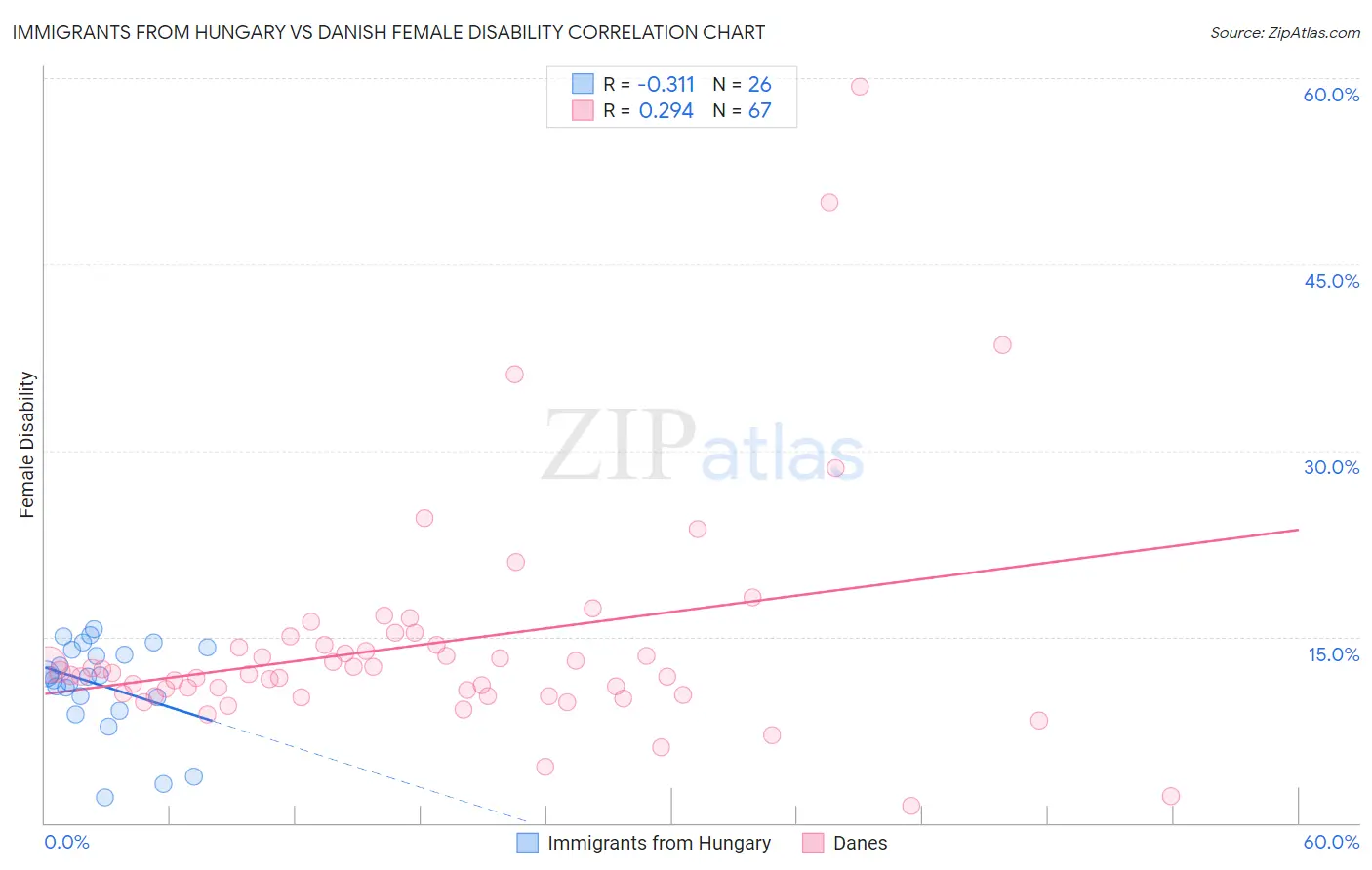Immigrants from Hungary vs Danish Female Disability
COMPARE
Immigrants from Hungary
Danish
Female Disability
Female Disability Comparison
Immigrants from Hungary
Danes
11.9%
FEMALE DISABILITY
92.8/ 100
METRIC RATING
139th/ 347
METRIC RANK
12.1%
FEMALE DISABILITY
72.5/ 100
METRIC RATING
157th/ 347
METRIC RANK
Immigrants from Hungary vs Danish Female Disability Correlation Chart
The statistical analysis conducted on geographies consisting of 195,708,116 people shows a mild negative correlation between the proportion of Immigrants from Hungary and percentage of females with a disability in the United States with a correlation coefficient (R) of -0.311 and weighted average of 11.9%. Similarly, the statistical analysis conducted on geographies consisting of 474,084,483 people shows a weak positive correlation between the proportion of Danes and percentage of females with a disability in the United States with a correlation coefficient (R) of 0.294 and weighted average of 12.1%, a difference of 1.5%.

Female Disability Correlation Summary
| Measurement | Immigrants from Hungary | Danish |
| Minimum | 2.0% | 1.4% |
| Maximum | 15.6% | 59.3% |
| Range | 13.6% | 58.0% |
| Mean | 11.1% | 14.4% |
| Median | 11.8% | 12.1% |
| Interquartile 25% (IQ1) | 10.1% | 10.3% |
| Interquartile 75% (IQ3) | 13.9% | 14.3% |
| Interquartile Range (IQR) | 3.8% | 4.0% |
| Standard Deviation (Sample) | 3.6% | 9.4% |
| Standard Deviation (Population) | 3.6% | 9.3% |
Demographics Similar to Immigrants from Hungary and Danes by Female Disability
In terms of female disability, the demographic groups most similar to Immigrants from Hungary are Ecuadorian (11.9%, a difference of 0.090%), Romanian (11.9%, a difference of 0.16%), Immigrants from Ecuador (11.9%, a difference of 0.18%), Immigrants from Africa (11.9%, a difference of 0.35%), and Immigrants from Sudan (11.9%, a difference of 0.39%). Similarly, the demographic groups most similar to Danes are Immigrants from Middle Africa (12.1%, a difference of 0.010%), Moroccan (12.1%, a difference of 0.020%), Ghanaian (12.1%, a difference of 0.20%), Syrian (12.1%, a difference of 0.22%), and Sudanese (12.0%, a difference of 0.35%).
| Demographics | Rating | Rank | Female Disability |
| Ecuadorians | 93.4 /100 | #138 | Exceptional 11.9% |
| Immigrants | Hungary | 92.8 /100 | #139 | Exceptional 11.9% |
| Romanians | 91.6 /100 | #140 | Exceptional 11.9% |
| Immigrants | Ecuador | 91.5 /100 | #141 | Exceptional 11.9% |
| Immigrants | Africa | 90.0 /100 | #142 | Excellent 11.9% |
| Immigrants | Sudan | 89.6 /100 | #143 | Excellent 11.9% |
| Immigrants | Austria | 87.9 /100 | #144 | Excellent 12.0% |
| Estonians | 87.8 /100 | #145 | Excellent 12.0% |
| Pakistanis | 84.6 /100 | #146 | Excellent 12.0% |
| Nigerians | 84.0 /100 | #147 | Excellent 12.0% |
| Immigrants | Kenya | 83.1 /100 | #148 | Excellent 12.0% |
| Greeks | 82.0 /100 | #149 | Excellent 12.0% |
| Immigrants | Moldova | 81.4 /100 | #150 | Excellent 12.0% |
| Icelanders | 80.7 /100 | #151 | Excellent 12.0% |
| Immigrants | Scotland | 79.3 /100 | #152 | Good 12.0% |
| Sudanese | 79.1 /100 | #153 | Good 12.0% |
| Syrians | 76.9 /100 | #154 | Good 12.1% |
| Ghanaians | 76.6 /100 | #155 | Good 12.1% |
| Moroccans | 72.9 /100 | #156 | Good 12.1% |
| Danes | 72.5 /100 | #157 | Good 12.1% |
| Immigrants | Middle Africa | 72.4 /100 | #158 | Good 12.1% |